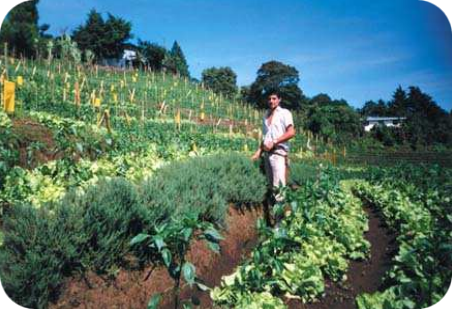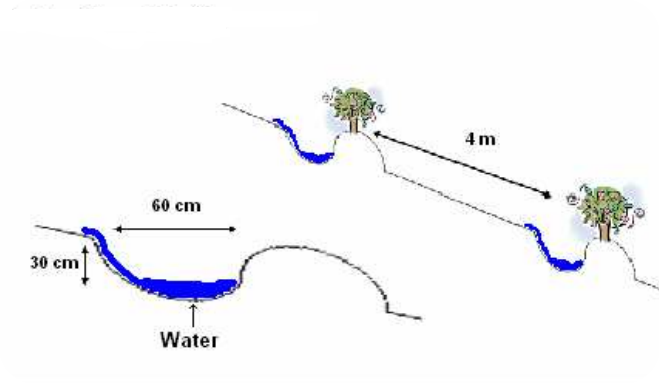Application: Canals, culverts and drains, drainage, dykes, farms, stormwater outfall
Description: Field trenches is extensive ploughing to the right angle of a field’s slope. By breaking the slope of the ground, they increase precipitation harvesting and reduce the velocity of water runoff. Field trenches filter runoff water and hence reduce soil degradation and enhance infiltration of surface run-off and soil moisture. A great advantage of field trenches in comparison to other types of water harvesting measures is their applicability to both even land and steep slopes, and to all soil and rainfall conditions. For optimal performance, trenches are constructed along contour lines. Therefore, the lines need to be marked before starting shovelling. When digging the trench, the excavated soil is placed downslope along the edge of the trench. Crops are then planted on the elevated land between the trenches. While the continuous ones are best suited for moisture conservation in regions with low rainfall, interrupted trenches are best suited to high rainfall areas.
Contribution to climate resilience: By breaking the slope of the ground, field trenches reduce the velocity of water run-off caused by heavy rainfall and flash floods, thus reducing erosion. They also harvest water which helps sustain crops planted between the trenches. Because they are constructed using local labour and locally available materials, they are highly adaptable to climatic events and help to increase the resilience of the agricultural systems they support.
Supplementary sources of information:
http://www.sswm.info/content/field-trenches
http://www.bebuffered.com/downloads/sussman_contour_trenches.pdf
This resilience-building measure is sourced from the Water Resource Adaptation Guide (2019) published by the National Council for Sustainable Development at the Ministry of Environment in Cambodia. The full Guide is available to download at URL https://ncsd.moe.gov.kh/sites/default/files/2019-10/Water%20Resources%20Adaptation%20Guide_March%202019_En.pdf


